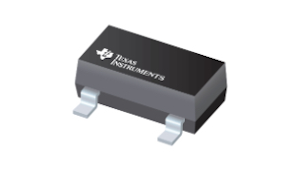Jun
2 | Electronic Design Power & Analog UpdateSPECIAL EDITION | |
| Sponsored by Texas Instruments | | | |
|
|
|
| | Avoid the 3 common pitfalls when designing with a Hall-effect sensorLearn how to resolve common challenges associated with Hall-effect sensors in industrial and automotive applications – rotary encoding, robust signaling and in-plane magnetic sensing. | | |
|
|
|
| | | | The TMAG5110is a 2-dimensional,dual Hall-effect latch operating from a 2.5-V to 38-V power supply. Designed for high-speed and high-temperature motor applications, these devices are optimized for applications leveraging rotating magnets. | |
|
|
|
|  Two-wire (current output), high-voltage (up to 38V), high-precision switchThe TMAG5124 is a high-precision Hall effect sensor that offers a 2-wire interface designed for industrial designs. It integrates a current source that switches between two levels depending on the value of the magnetic field applied to the part. | | |
|
|  High-voltage (up to 38 V), in-plane, high-precision switchThe TMAG5123 is a chopper-stabilized omnipolar, active-low, in-plane, Hall-effect switch sensor. The TMAG5123 eases mechanical placement of the sensor by measuring magnetic fields parallel to the surface of the PCB in a surface mount SOT-23 package. | | |
|
|
|
| | Using Hall Effect Position Sensors for Rotary Encoding ApplicationsThis video discusses how either a latch or a linear Hall sensor can be used for rotary encoding applications. It will walk through important considerations such as magnet poles, frequency and spacing when designing such a system. | | |
|
| Magnetic Sensors: Latches & Switches - Operating & Release PointThis video walks through the functionality of Hall Effect latches and switches. It’ll explain the operate point and release point and how to select the correct sensor for your design. | | |
|
|
|
| | Learn about how Hall-effect sensors work to measure position, distance and movement. This article will enable you to gain insight into theory, topologies, use cases and different types of Hall-effect sensors: switches, latches and linear sensors. | | | |
|
|
| Sensing Magnetic Fields In-Plane Versus OrthogonallyThe majority of Hall-effect magnetic sensors today measure and monitor magnetic fields orthogonally to the surface of the package. Learn more about magnetic fields of interest and how to sense magnetic fields in-plane versus orthogonally. | | |
|
| Reducing Quadrature Error Using 2D Hall-Effect SensorsIncremental rotary encoding is associated with latching Hall Sensors. Measurements of position, speed, and direction provide system feedback and requires two sensors 90° out of phase from each other to achieve the desired quadrature output. | | |
|
|
|
Connect With Us |
This email is being sent to @{email name}@. Please add news.endeavorb2b.com and mail.endeavorb2b.com to your address book or safe sender list to receive our emails in your inbox. Unsubscribe | Manage Newsletter Subscriptions | Forward to a Friend | Customer Service Center | Read Privacy Policy If this email was forwarded to you and you are interested in subscribing, please click here to sign-up. If you have trouble with any of these methods, you can reach us toll-free at 800-547-7377. Electronic Design
Endeavor Business Media
331 54th Avenue N.
Nashville, TN 37209 |




